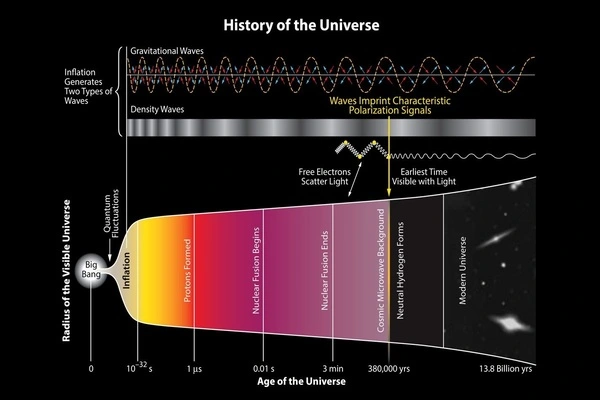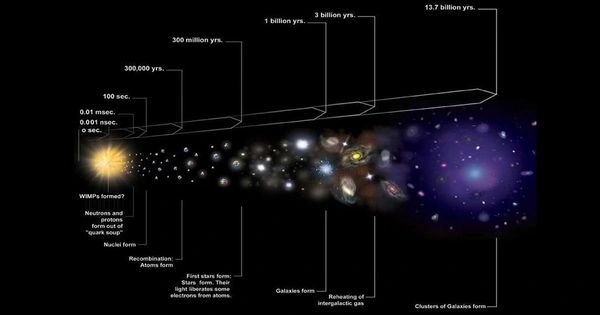A new simulation depicts the first few seconds after the Big Bang, focusing on what scientists refer to as the intergalactic medium, or the gas and dust between galaxies. A team lead by academics from the Institute of Astrophysics of the Canary Islands (IAC) completed 100,000 hours of computation using machine learning, a form of technique in which a computer is trained to spot patterns. The algorithm used in this project is known as Hydro-BAM.
According to Big Bang cosmology, the universe’s chronology describes the universe’s past and future. According to research published in 2015, the early stages of the universe’s existence occurred 13.8 billion years ago, with an uncertainty of roughly 21 million years at the 68 percent confidence level.
According to IAC representatives, this new effort enabled researchers to record phenomena like as dark matter, charged gas, neutral hydrogen, and other cosmic elements that are critical to comprehending the formation of our universe.
“The discovery has also made it possible to reproduce the so-called ‘Lyman-alpha forests’ with remarkable precision,” they noted. That is a specific pattern of lines in a spectrum (light signature) of galaxies and comparable objects formed when clouds of hydrogen gas absorb cosmic light in this manner.
The breakthrough came when we realized that the connections between the quantities of intergalactic gas, dark matter, and neutral hydrogen that we were trying to model are well organized in a hierarchical way.
Francesco Sinigaglia
“These ‘virtual worlds’ serve as test beds for cosmological research,” the researchers noted. “However, the simulations are computationally quite expensive, and existing computing facilities allow [us] to study only limited cosmic expanses.”
Hydro-BAM is designed to include probability, machine learning, and cosmology, meaning the history of the universe. “This algorithm has made it possible to obtain very accurate predictions in just a few tens of seconds,” the researchers said.
The very beginning of the universe: the first picosecond (1012) of cosmic time. It includes the Planck epoch, during which current physics laws may not apply; the gradual emergence of the four known fundamental interactions or forces—first gravitation, then electromagnetic, weak, and strong interactions; and the expansion of space itself and supercooling of the still extremely hot universe due to cosmic inflation.
At this period, tiny ripples in the universe are thought to be the foundation for large-scale structures that evolved far later. To varying degrees, distinct stages of the very early cosmos are understood. The earliest components are outside the scope of actual particle physics experiments, although they can be investigated in other ways.

The early cosmos lasted roughly 370,000 years. In the beginning, many types of subatomic particles form in stages. Because these particles have almost equal amounts of matter and antimatter, most of them annihilate fast, leaving a minor surplus of matter in the cosmos.
Neutrinos dissociate in about one second, and these neutrinos create the cosmic neutrino background (CvB). If primordial black holes exist, they are generated at around one second in cosmic time. Composite subatomic particles, including protons and neutrons, emerge, and conditions are favorable for nucleosynthesis after about 2 minutes: around 25% of the protons and all neutrons fuse into heavier elements, initially deuterium, which swiftly fuses into primarily helium-4.
By 20 minutes, the cosmos is no longer hot enough for nuclear fusion, but it is far too hot for neutral atoms or photons to traverse great distances. As a result, it is an opaque plasma.
The team was able to learn about the location of hydrogen gas clouds by charting the absorption lines in the galactic spectra. Given that the cosmos is always expanding, location is a proxy for distance. The clouds also reveal information about what is in the cosmic medium of gas and dust.
“The breakthrough came when we realized that the connections between the quantities of intergalactic gas, dark matter, and neutral hydrogen that we were trying to model are well organized in a hierarchical way,” said Francesco Sinigaglia, a doctoral student at the University of La Laguna in Spain, the IAC, and the University of Padua in Italy, and the study’s lead author.





